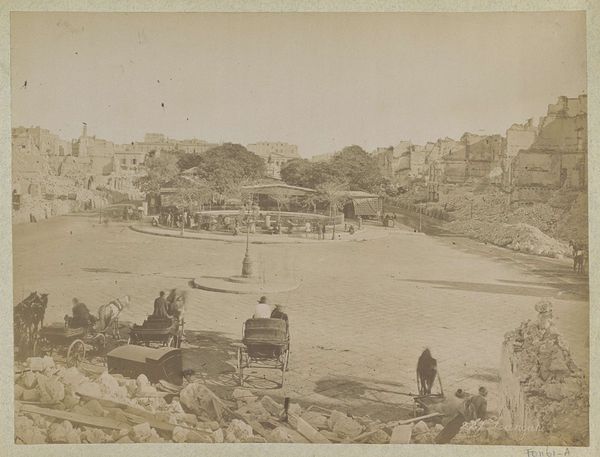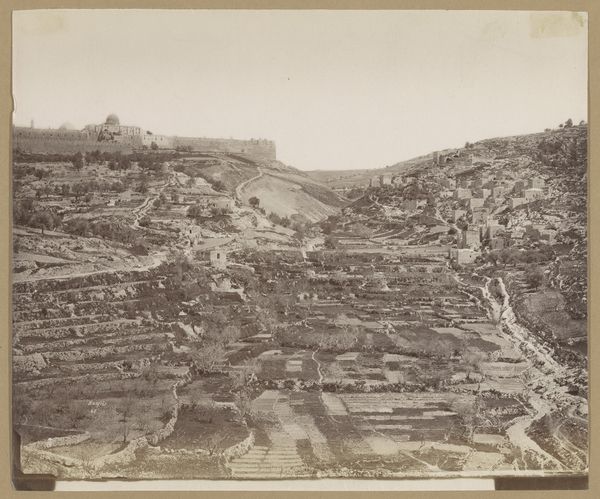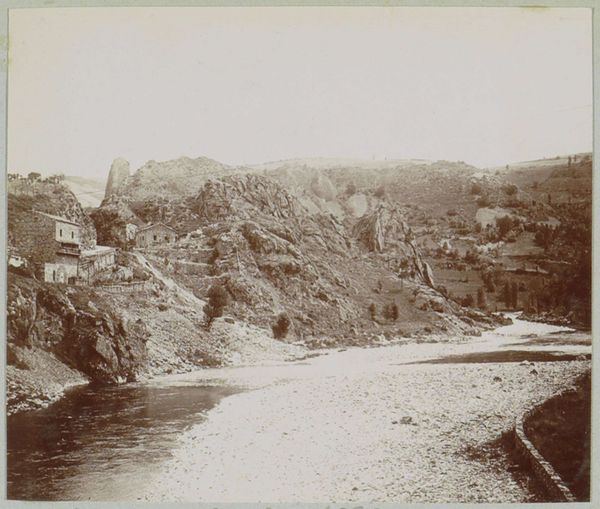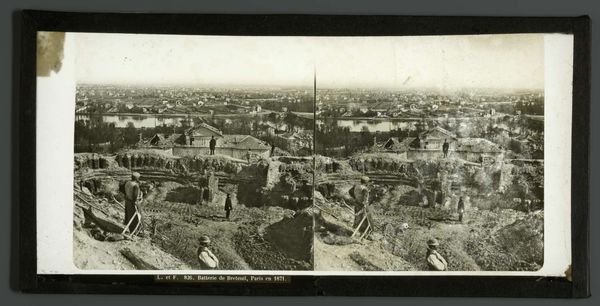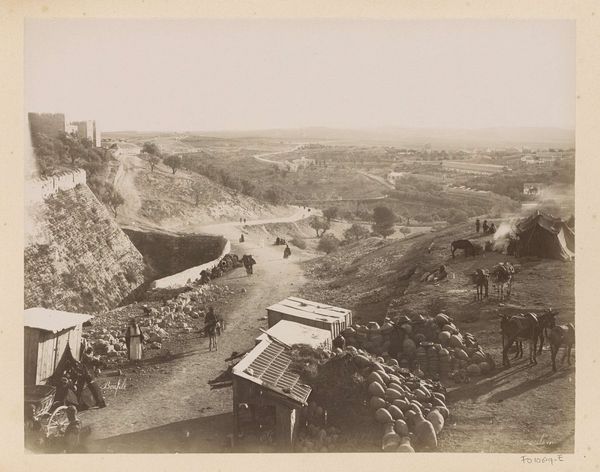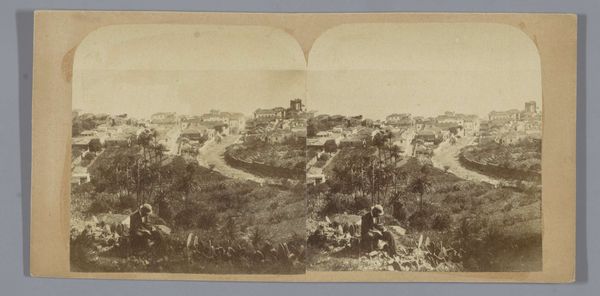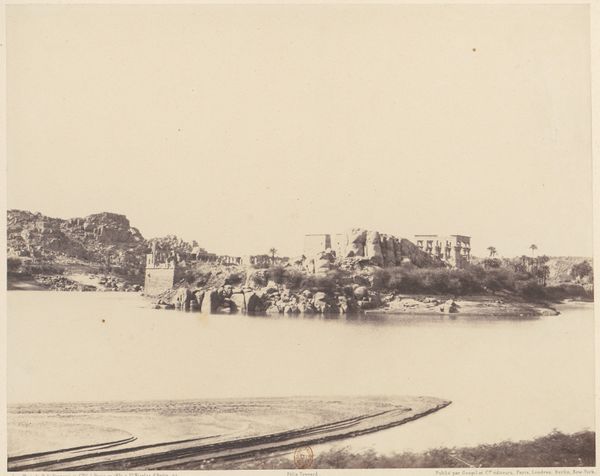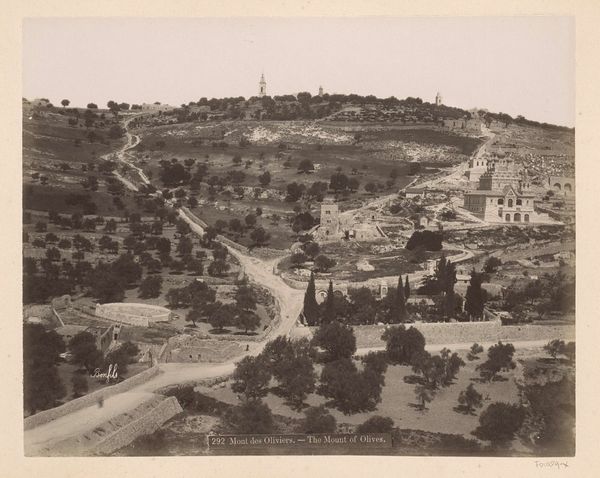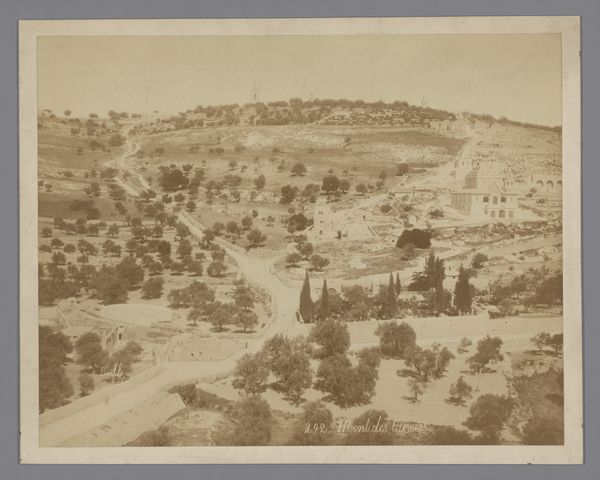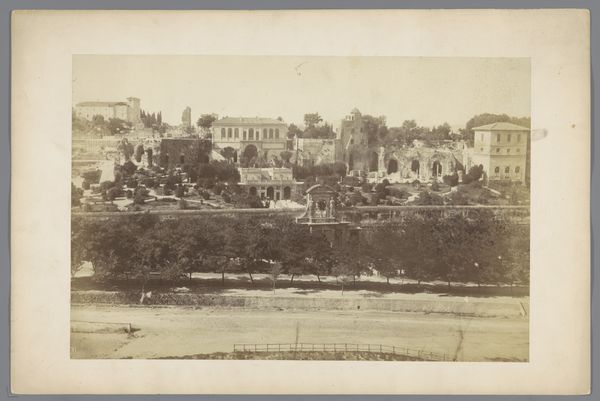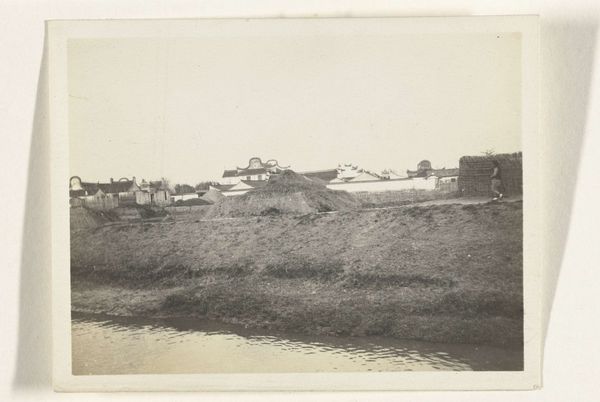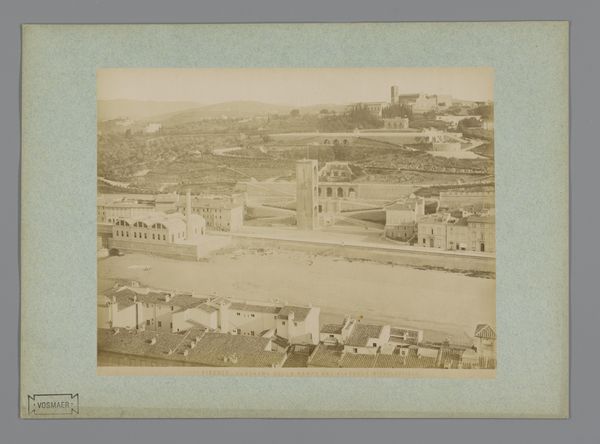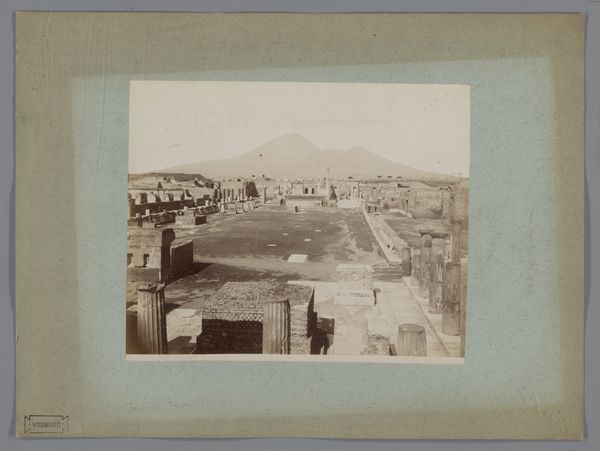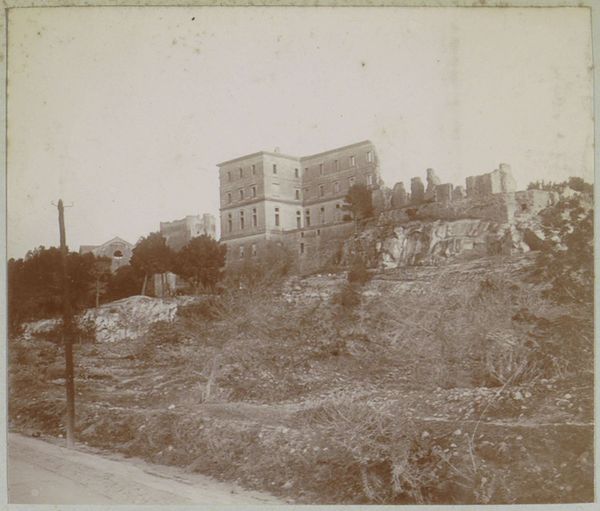
photography
#
photography
#
orientalism
#
cityscape
Dimensions: height 157 mm, width 208 mm
Copyright: Rijks Museum: Open Domain
Editor: We’re looking at "Aanzicht op de stad Shûshtar, Iran," a photograph taken by Antoine Sevruguin between 1885 and 1910. It depicts a city perched atop a series of rocky cliffs and cascading waterways. The sepia tones give it a wonderfully antiquated feel. What do you see in this image? Curator: I see a tapestry of time. The city, seemingly carved from the earth itself, presents a narrative of resilience and adaptation. The rushing water, a constant force, clashes against the steadfastness of the buildings, a beautiful visual dichotomy. The waterways are important because in some cultural and historical context water is considered the source of all things; how does this consideration add depth to our viewing experience? Editor: That's a beautiful interpretation. The city does seem to be emerging organically from the landscape itself. I hadn’t considered the symbolic weight of the water, just its literal presence. Curator: Consider too, the vantage point of the photographer. Are we invited into this city or kept at bay? There’s a delicate balance of the romantic and the ethnographic in Sevruguin's work, creating meaning by presenting a society’s structure alongside natural power and influence. Editor: It definitely feels more like an observation than an invitation, like a respectful distance is being maintained. It reminds me of Orientalist paintings of the period. I am particularly intrigued by how it shows both power and decline... Curator: Indeed, Orientalism definitely influenced Sevruguin. Perhaps the ruins imply a past glory or the transient nature of power, or the cycle of civilization itself; visual ideas we recognize. Does the image resonate with those considerations in mind? Editor: It definitely does. Seeing the work with an understanding of potential meaning allows it to become richer, as it bridges across time. Curator: Absolutely. Through those bridging effects, the symbolic power can extend past its original timeframe, continuing its impact.
Comments
No comments
Be the first to comment and join the conversation on the ultimate creative platform.
